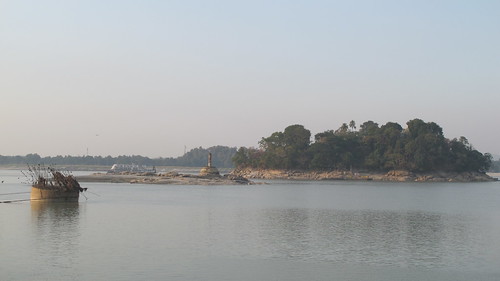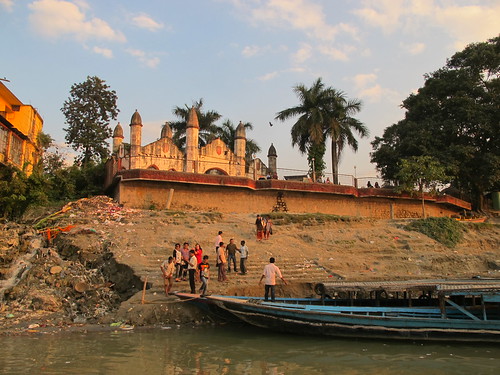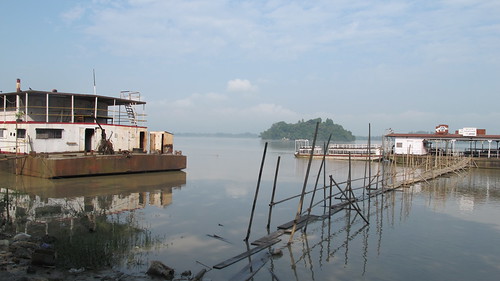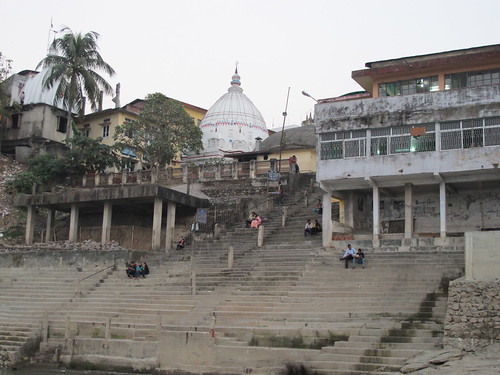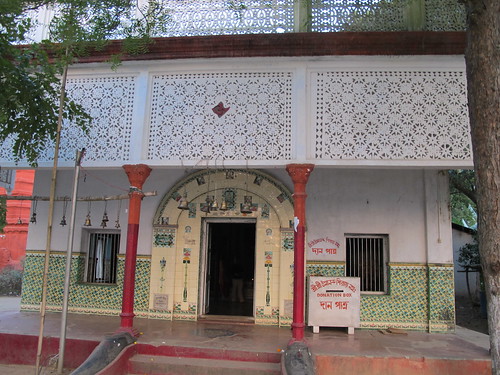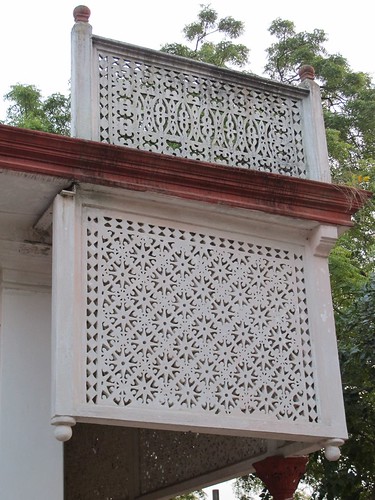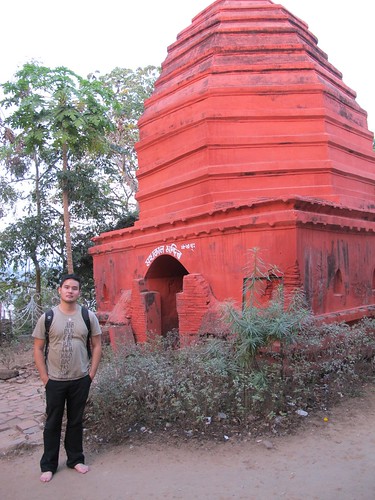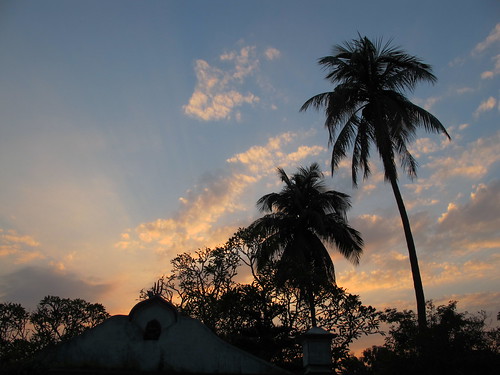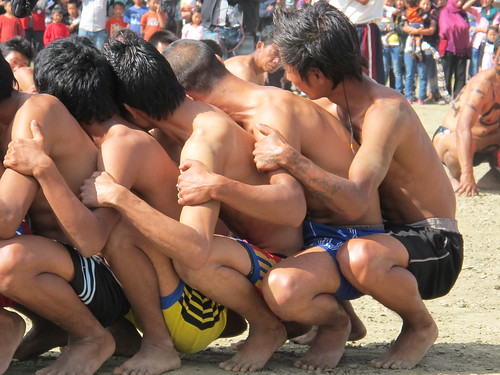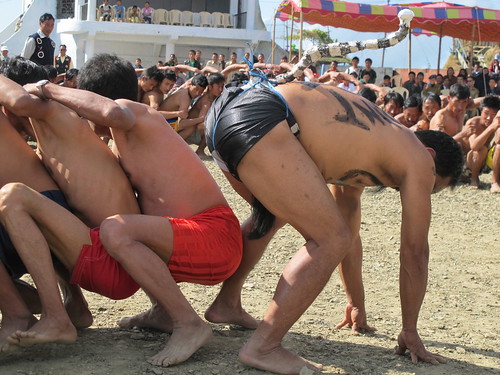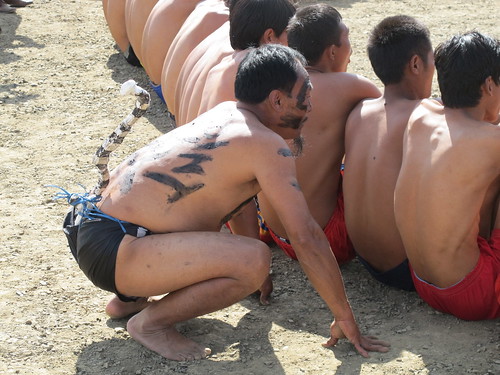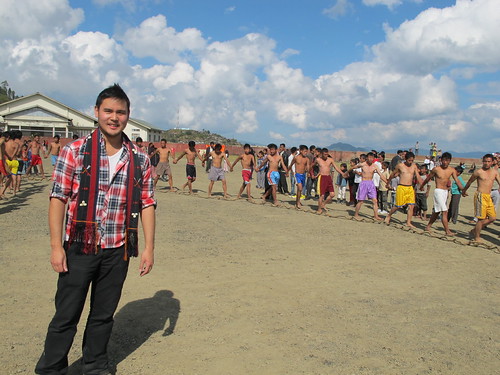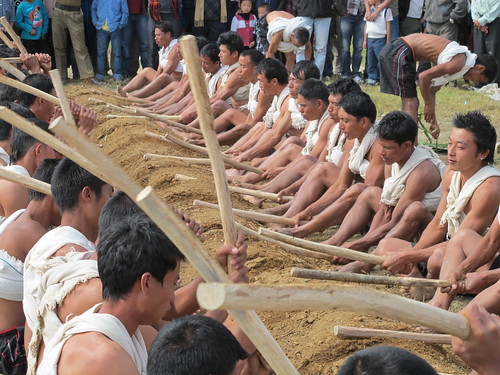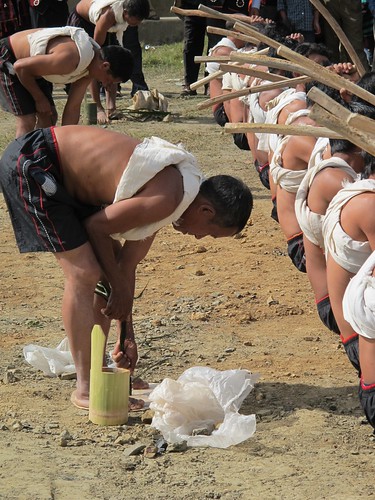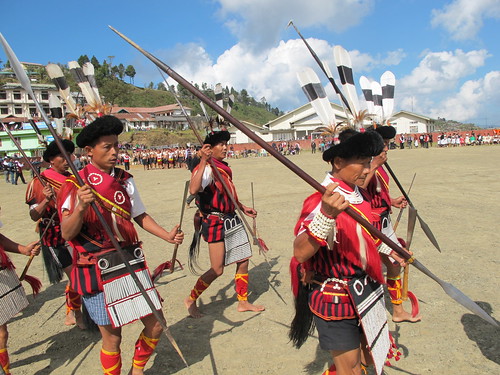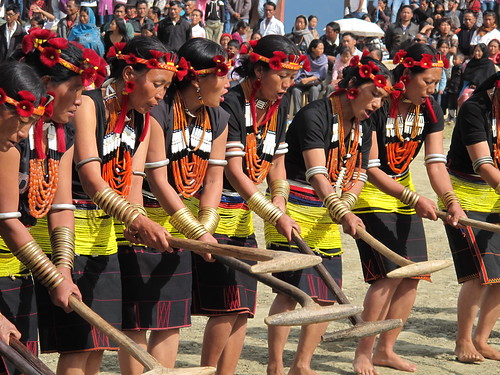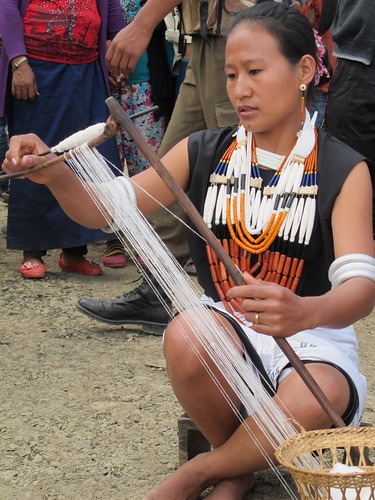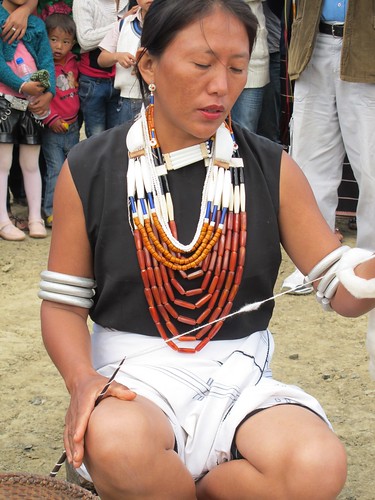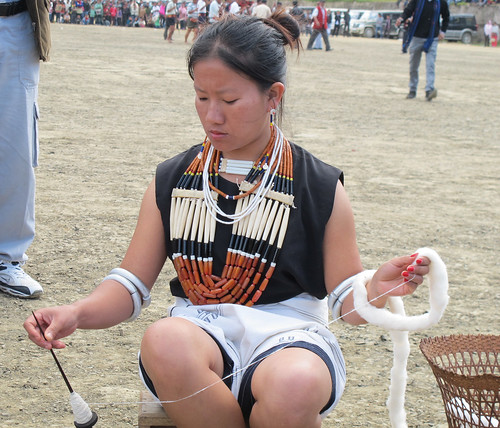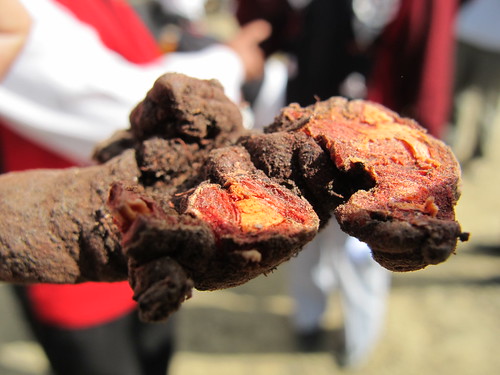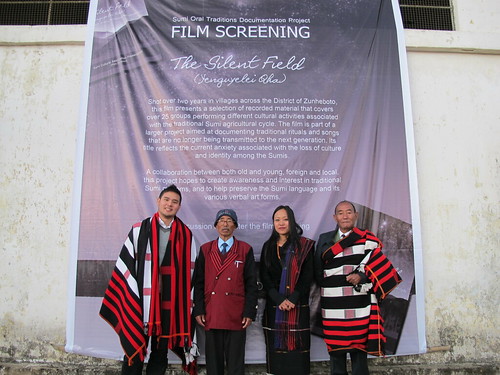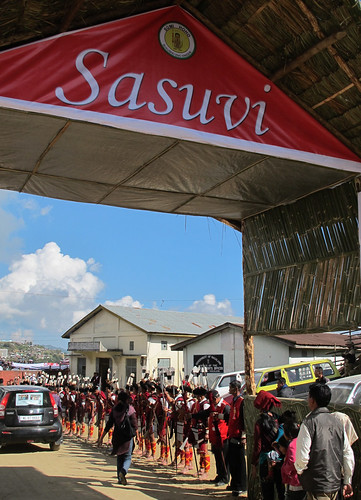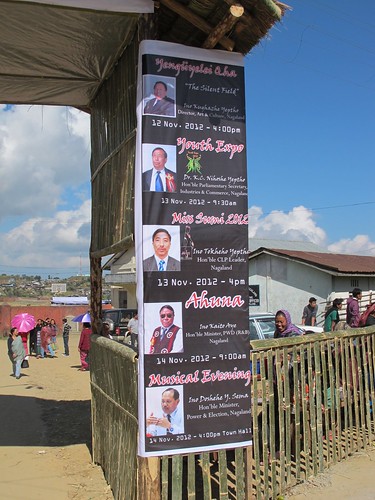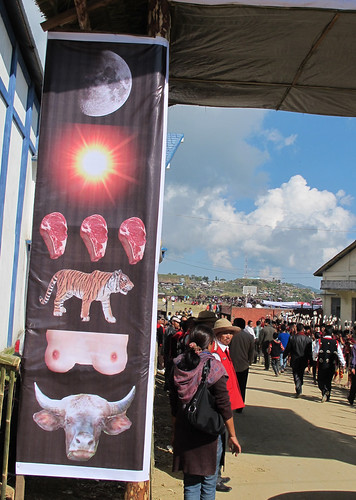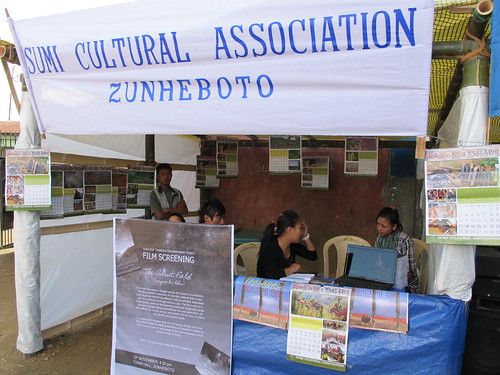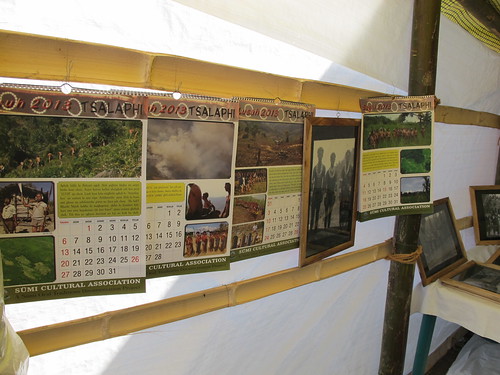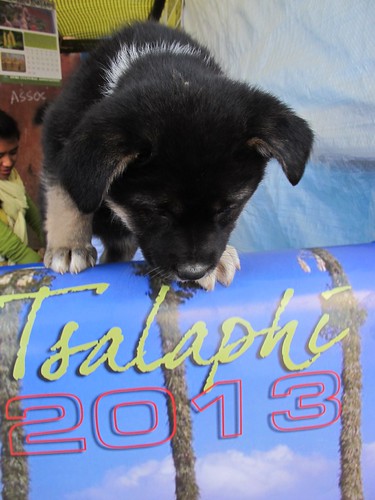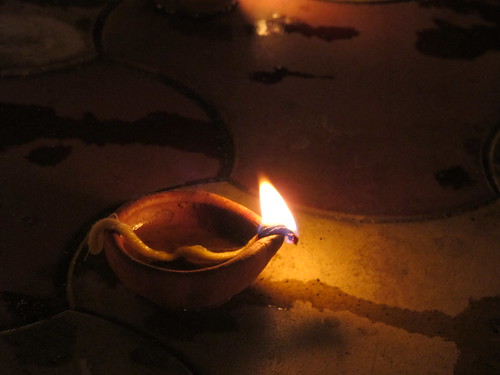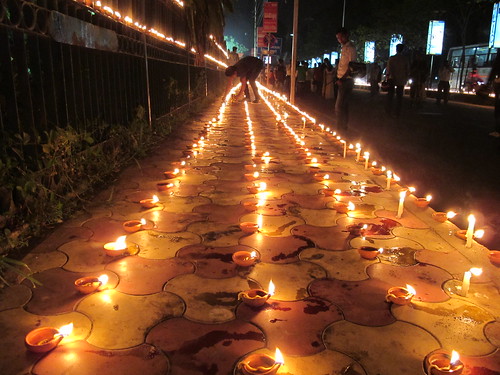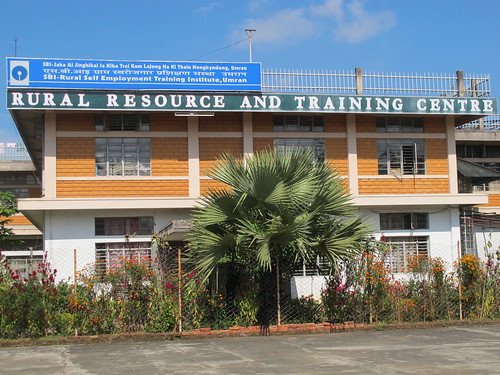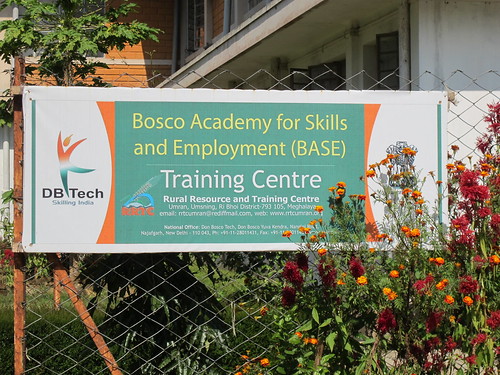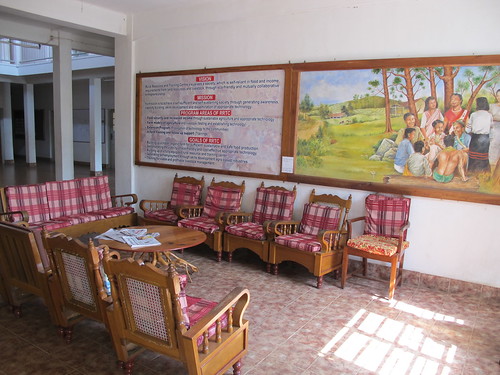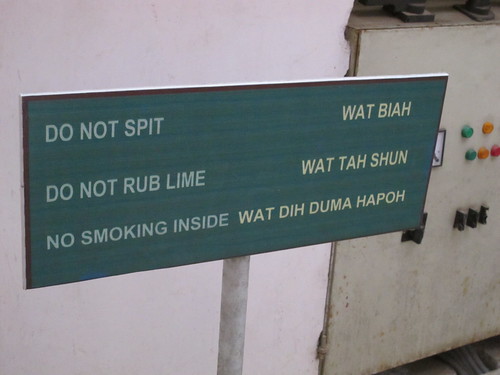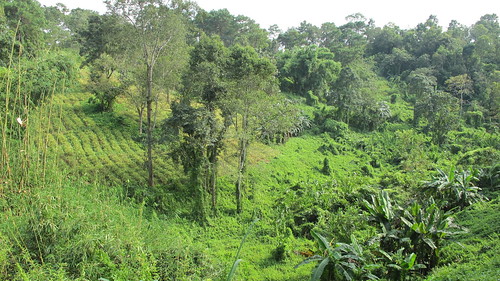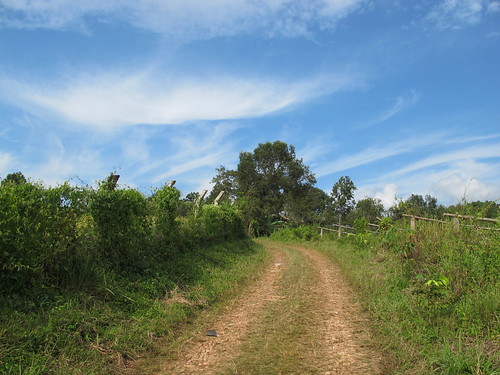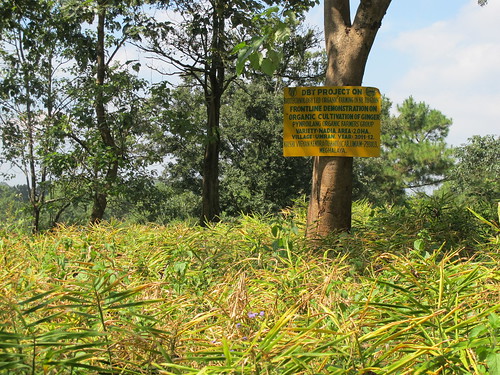As I'll be heading back to Nagaland in a few days' time for the Hornbill Festival, I thought I'd finish posting about some of the sightseeing I've been doing in Guwahati the past two weeks. Last week, my friend A. S. dropped into Guwahati for a few days and we ended up doing a bit of sightseeing, visiting places that I hadn't been to, even though I've been in Guwahati since August, and this is the 2nd extended stay here.
One place we visited was the Umananda Mandir on Peacock Island, situated in the middle of the Brahmaputra, just north of the city. I'd seen the island many times from my walks along the Brahmaputra, but had never actually visited the island.
Getting there isn't too difficult. There are ferries (shared or for individual hire) at Sukreswar Ghat (or rather, the makeshift ghat next to the Sukreswar Ghat park between Fancy Bazar and Pan Bazar). We paid Rs 550 to hire a whole boat to take us to the island and back at our own leisure, but some guys that came back as we were heading off paid Rs 500. I think there was also a shared ferry that left at regular intervals, though I can't remember the price for that.
There is another ferry service that lives from Uzan Bazar Ghat, but I don't know the price either. [Note: this photo was taken near the end of the monsoon, when the water level was still very high. At this time of year, the boat on the left sits on a sand bank.]
The boat ride was pleasant enough, and took us past the real Sukreswar Ghat.
The highlight though, was seeing the sun set over the river. We left around 3.45pm, and given how far east we are within this time zone, the sun sets by about 4.30pm at this time of year here.
The temple complex itself was charming enough. It was originally a Shiva temple built by an Ahom king. (The Ahoms actually came from further east, speaking a language that is closer to Thai than to Assamese.) However, most of the original temple was damaged in the quake of 1897 and the temple was subsequently rebuilt. The current Wikipedia article says it was a 'rich local merchant', and judging by the use of tiles, I would hazard a guess that it was a Marwari merchant whose family hailed from Rajasthan.
And this is the temple itself.
Apart from the temple, the island is known to be home to a small troupe of golden langurs (a kind of monkey). We didn't have enough time to look for them as we walked around the island, but we did manage to see them in the trees on the boat ride back to Guwahati.
Next time I go, I'd probably give myself another half an hour or so and leave Sukreswar Ghat around 3pm (or roughly 1.5 hours before sunset), as I would've liked to have more time to look for langurs.
Still, it was a wonderful afternoon out on the Brahmaputra, and we got to see one of those amazing sunsets over the river that I've come to love.
One place we visited was the Umananda Mandir on Peacock Island, situated in the middle of the Brahmaputra, just north of the city. I'd seen the island many times from my walks along the Brahmaputra, but had never actually visited the island.
Getting there isn't too difficult. There are ferries (shared or for individual hire) at Sukreswar Ghat (or rather, the makeshift ghat next to the Sukreswar Ghat park between Fancy Bazar and Pan Bazar). We paid Rs 550 to hire a whole boat to take us to the island and back at our own leisure, but some guys that came back as we were heading off paid Rs 500. I think there was also a shared ferry that left at regular intervals, though I can't remember the price for that.
There is another ferry service that lives from Uzan Bazar Ghat, but I don't know the price either. [Note: this photo was taken near the end of the monsoon, when the water level was still very high. At this time of year, the boat on the left sits on a sand bank.]
The boat ride was pleasant enough, and took us past the real Sukreswar Ghat.
The highlight though, was seeing the sun set over the river. We left around 3.45pm, and given how far east we are within this time zone, the sun sets by about 4.30pm at this time of year here.
The temple complex itself was charming enough. It was originally a Shiva temple built by an Ahom king. (The Ahoms actually came from further east, speaking a language that is closer to Thai than to Assamese.) However, most of the original temple was damaged in the quake of 1897 and the temple was subsequently rebuilt. The current Wikipedia article says it was a 'rich local merchant', and judging by the use of tiles, I would hazard a guess that it was a Marwari merchant whose family hailed from Rajasthan.
And this is the temple itself.
Apart from the temple, the island is known to be home to a small troupe of golden langurs (a kind of monkey). We didn't have enough time to look for them as we walked around the island, but we did manage to see them in the trees on the boat ride back to Guwahati.
Next time I go, I'd probably give myself another half an hour or so and leave Sukreswar Ghat around 3pm (or roughly 1.5 hours before sunset), as I would've liked to have more time to look for langurs.
Still, it was a wonderful afternoon out on the Brahmaputra, and we got to see one of those amazing sunsets over the river that I've come to love.
